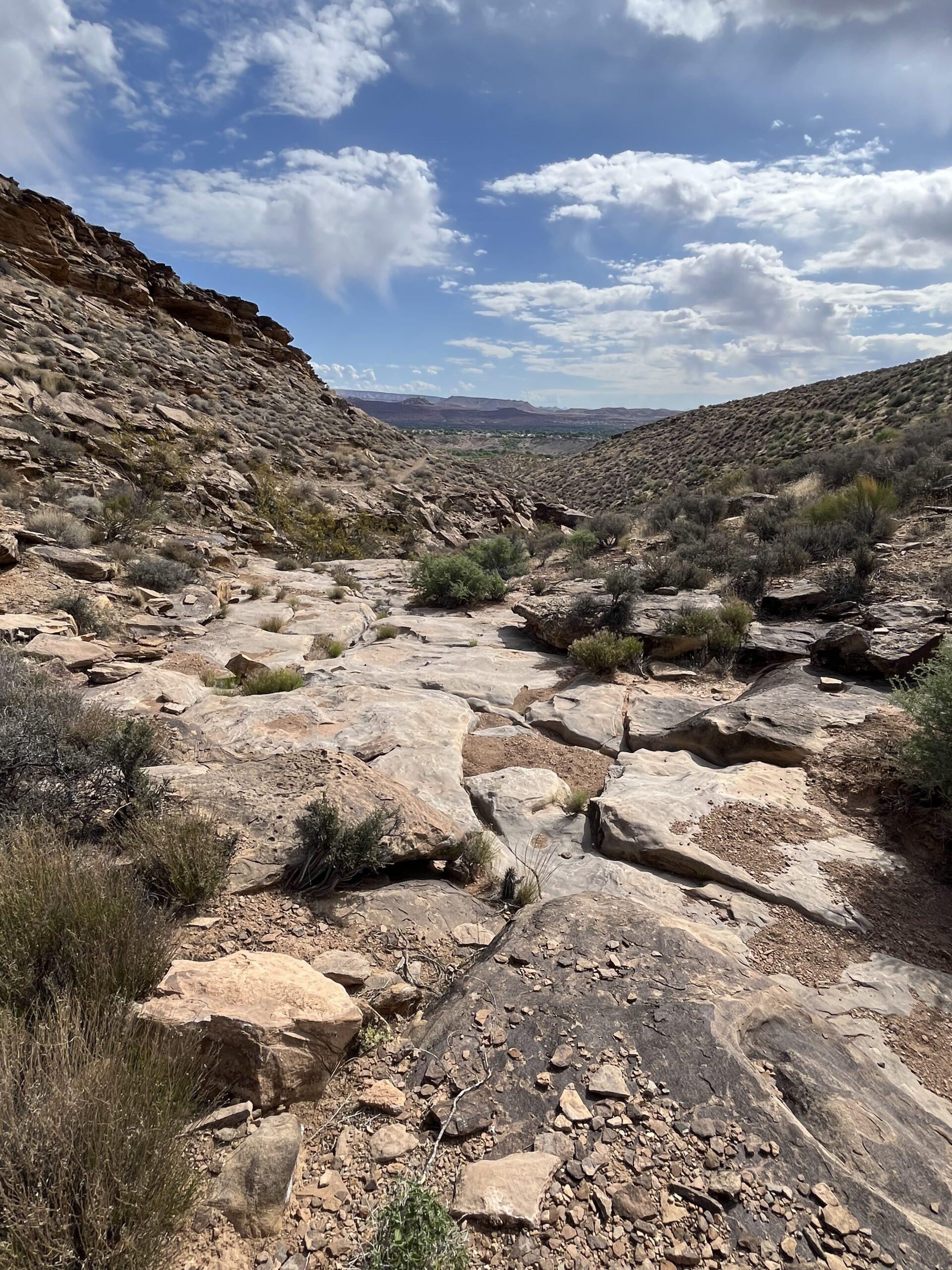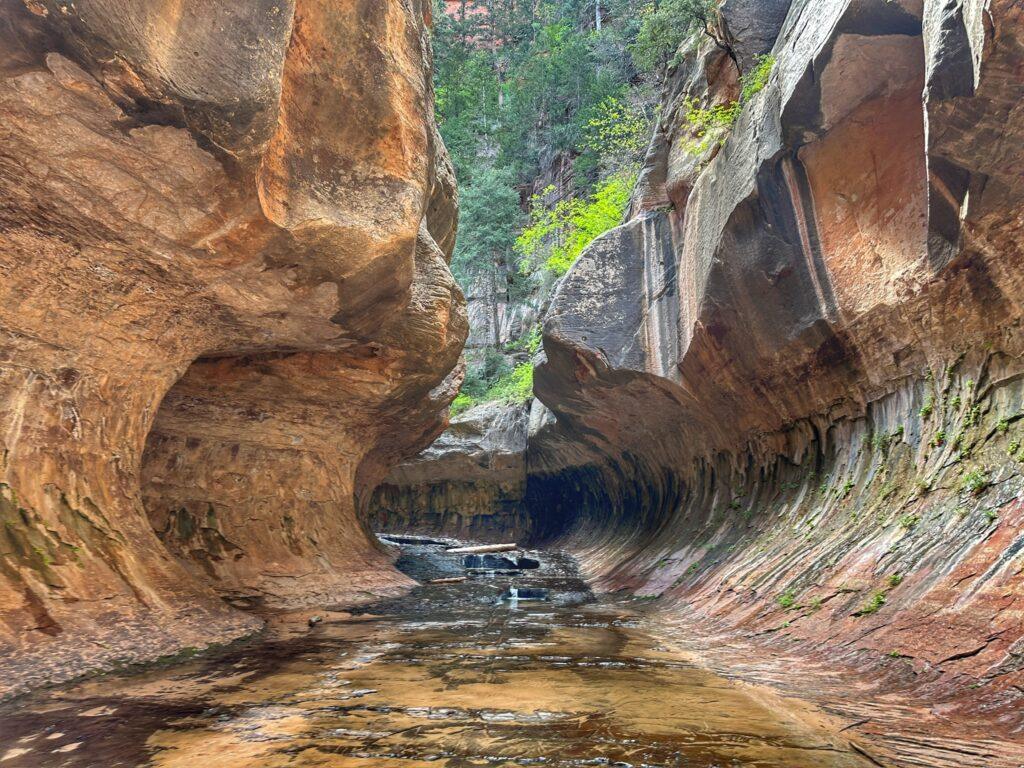
Hiking Vocabulary
It’s hiking vocabulary time. There are many terms that were new to us when we moved from the Midwest to Utah and began to explore. Understanding the terminology associated with trails and terrain is important. You will have a better idea of what to expect, navigation considerations, and more.
Balloon
This describes a trail that is shaped like balloon. You begin on the string of the figurative balloon, eventually coming to a loop that creates the balloon. A good example of a balloon trail is the Black Brush Trail in Santa Clara, Utah. This is in comparison to commonly seen ‘out and back’ and loop-shaped trails.
Learn more about Black Brush Trail:
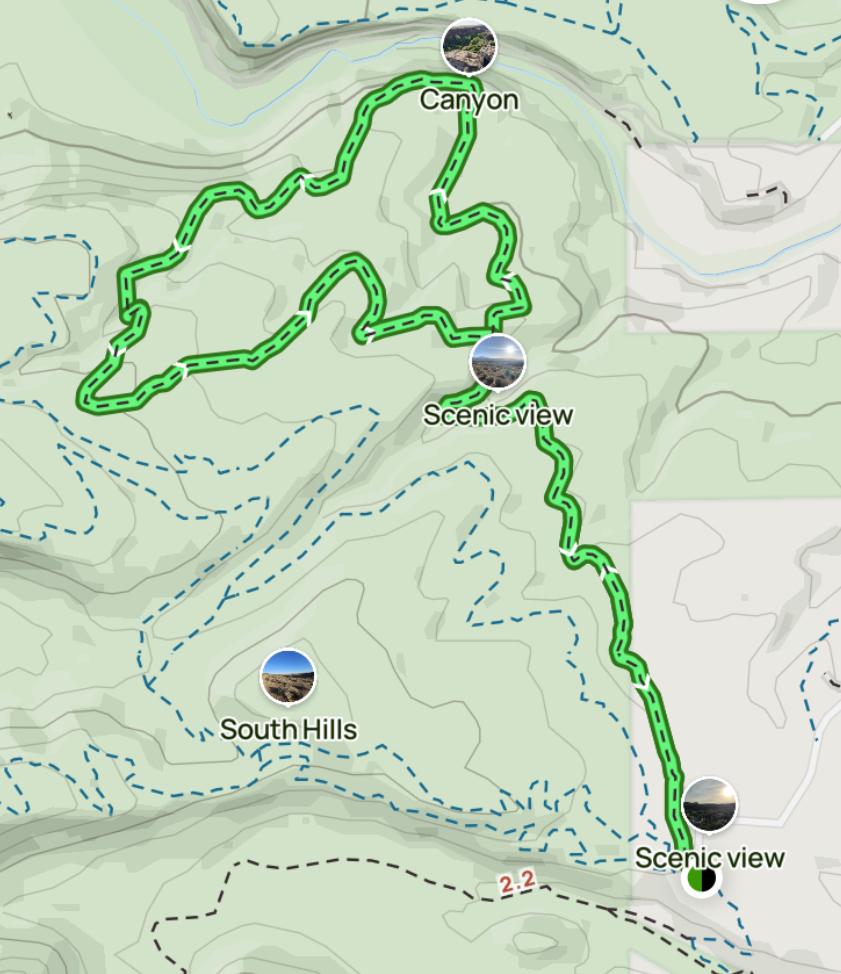
Map courtesy of AllTrails
Social Trail
This is a trail that is informal and unmarked. They are created by other people hiking and are not official. These trails are often damaging to sensitive environments and contribute to erosion. It can also create confusion about where you should actually be going.
Saddle
This is the lowest point between higher points. This may often be a portion of a trail you will hike to for a view, perhaps pass up and over to a descent, or may be used for a landmark. An example of a saddle is on Padre Canyon Trail behind Tuacahn. Our daughter is actually pointing to the saddle that we hike to.
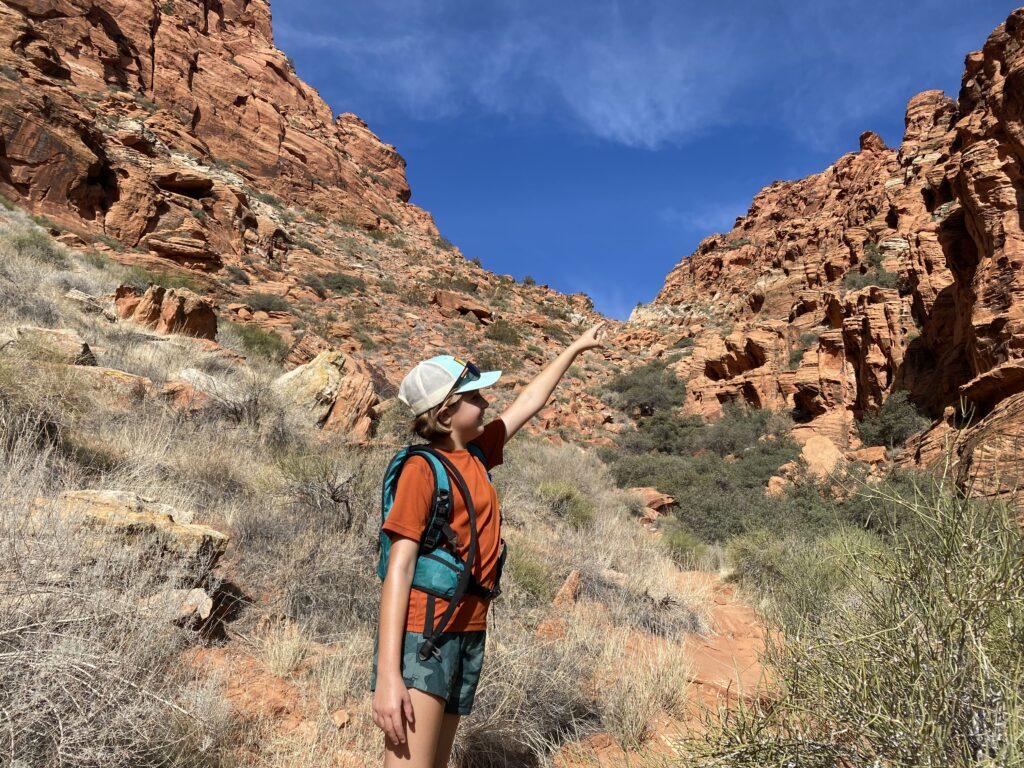
Slickrock
Though there are trails by this moniker that are an excellent example of this word, slickrock can also refer to the smooth, bare rock surface commonly seen in the Moab region. It is very slick when wet or if you have metal on your shoes, like with a bike cleat. However, when dry, the surface has a surprising amount of traction for a bike tire. This provides a surface for some epic mountain biking.
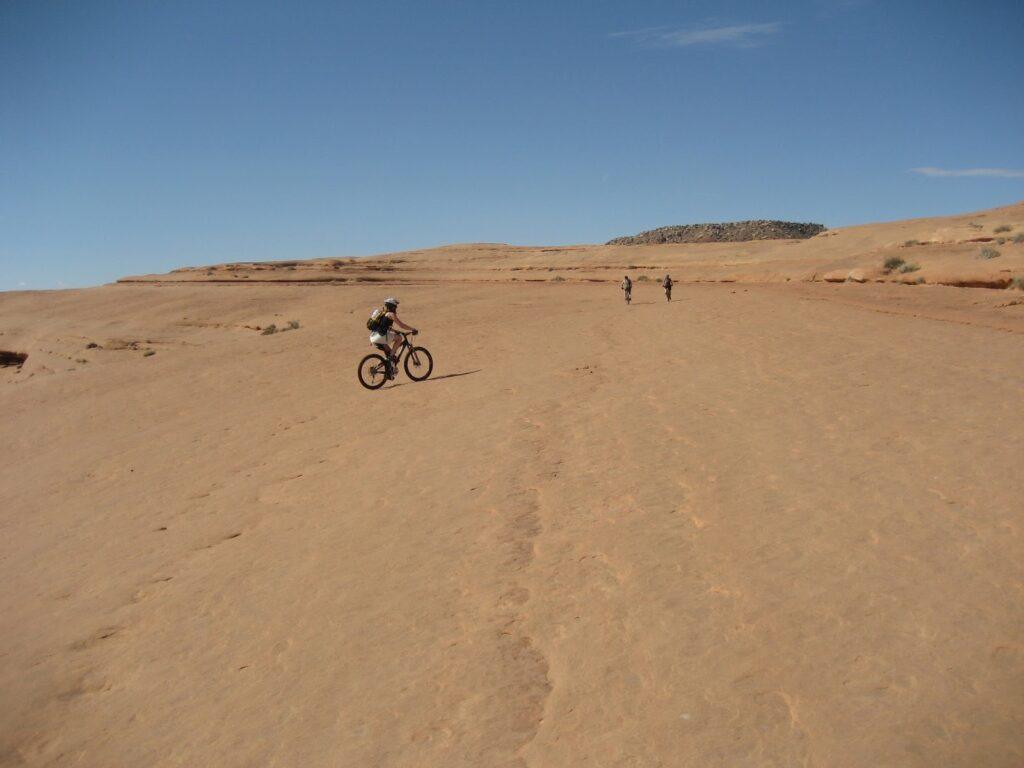
BLM
One of the best parts of Utah is the amount of BLM land. BLM stands for Bureau of Land Management, its “mission is to sustain the health, diversity, and productivity of public lands for the use and enjoyment of present and future generations”. In Utah alone, there are 22.8 million acres dedicated and classified into this category. This means 22.8 million acres of lands for you to enjoy recreation and beauty.
Learn more about BLM here, including maps, regulations, and their work.
Elevation Gain
This is the total amount of vertical feet you climb during a hike, regardless of the descent. Think about it as the amount of upward work you will put in. When the kids ask me how long a planned hike is, I remind them that 3 miles doesn’t mean the same each time. There is a big difference between a three mile loop of 50 feet of elevation gain, which is relatively flat, in comparison to a three mile out and back trail that has 1,000 feet of elevation gain that you will be huffing and puffing from.
Navajo Sandstone
Many of the places you will explore in Utah and the surrounding regions will have this unique type of stone, created millions of years ago as part of an ancient desert. Navajo sandstone gives us views of beautiful colors and patterns. Two well known examples are seen within Zion National Park and The Wave.
Check out our post on The Wave:
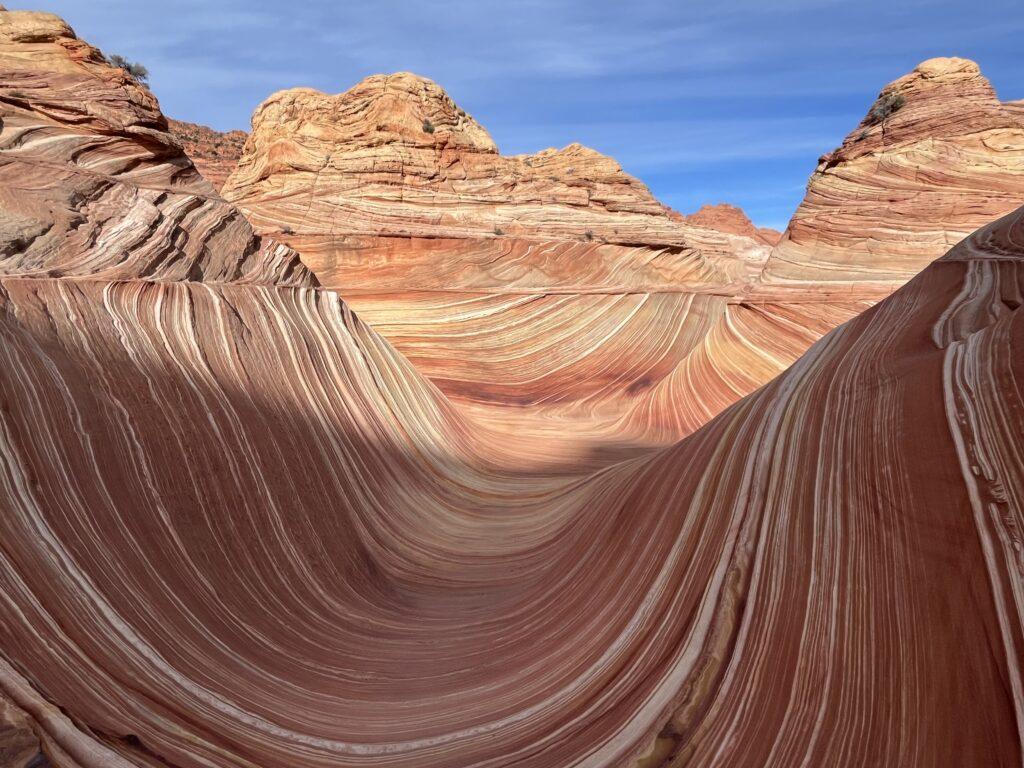
Cryptobiotic Crust
A living soil crust that is crucial to this environment and sensitive to destruction. This is one of the absolute most important reasons to stay on trail. See our post here to learn more about it. This segues into the idea of ‘Leave No Trace’, which, in summary, mean to leave somewhere in better condition than when you arrived and leave no evidence you were even there.
Cairn
A human-made tower of rocks, often used for a marker. Unfortunately, sometimes these “markers” are not always accurate or reliable for route finding. There is not a guarantee that these will send you in the right direction. Within National Parks, park staff will maintain these and they are a more trusted tool. Within a National Park, it is discouraged to build your own.

Slot Canyon
Narrow passages between rock walls, often formed within sandstone canyons. These are usually formed by erosion, most often water. These are one of the coolest geological features of this region, but also can be the most dangerous. Slot canyons are a drainage zone for water in the desert, which can create a hazardous and life threatening situation if you are in the canyon during a water event. Always be aware of the precipitation forecast, recent past, current, and future, for the area of the slot canyon you will be in.
Check out our posts about Peekaboo and Spooky Slot Canyons and Buckskin Gulch.
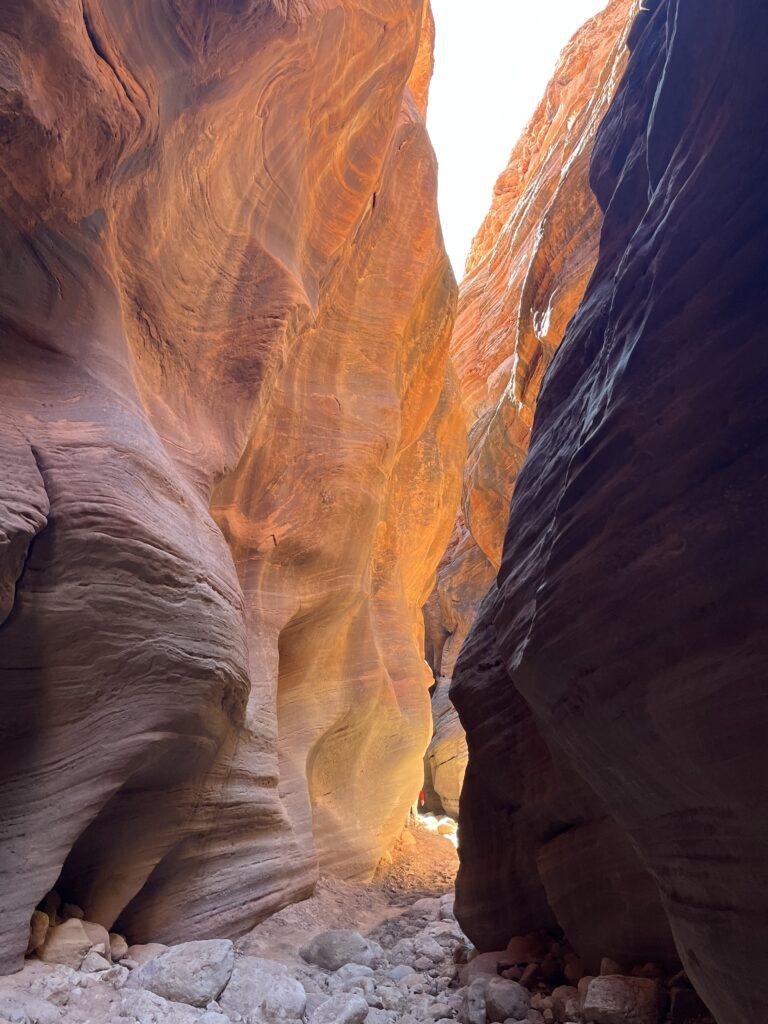
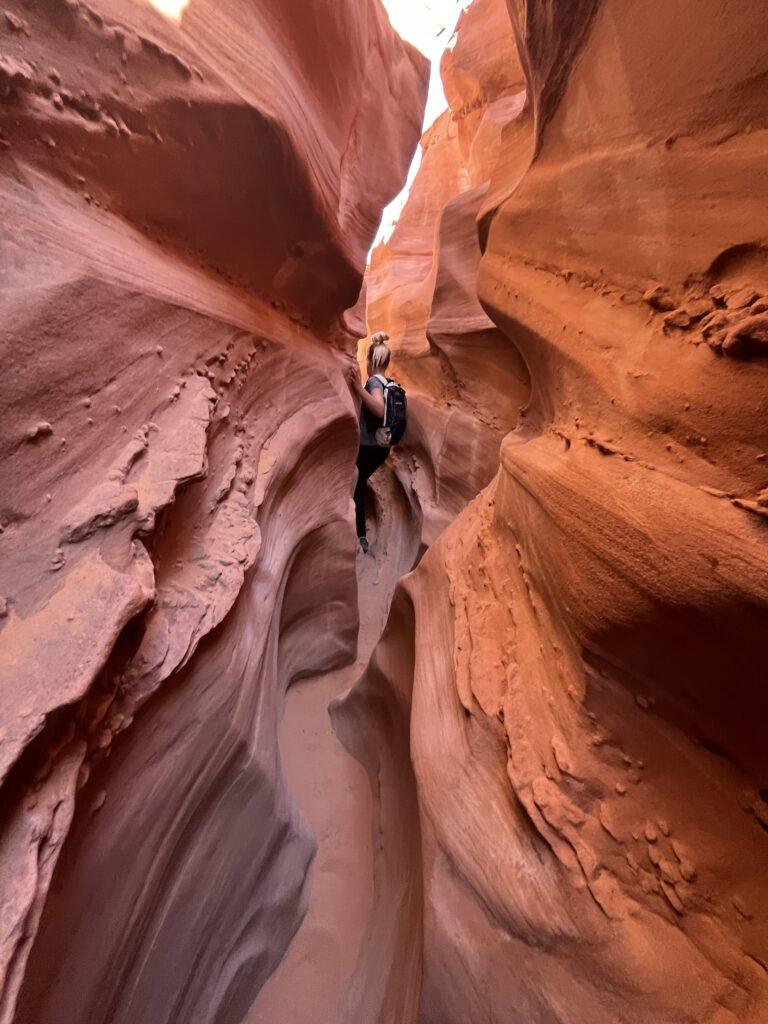
Monsoon
A weather pattern more unique to this southwest region. We usually don’t have all-day rains. Rather, we will have monsoon events, which are characterized by more localized, intense storms. These storms can have substantial amounts of rain, wind, thunder, lightening, and can come on suddenly. They can cause flash floods in a very quick period of time. It may be perfectly sunny at your house, and just down the road there is a storm happening.

